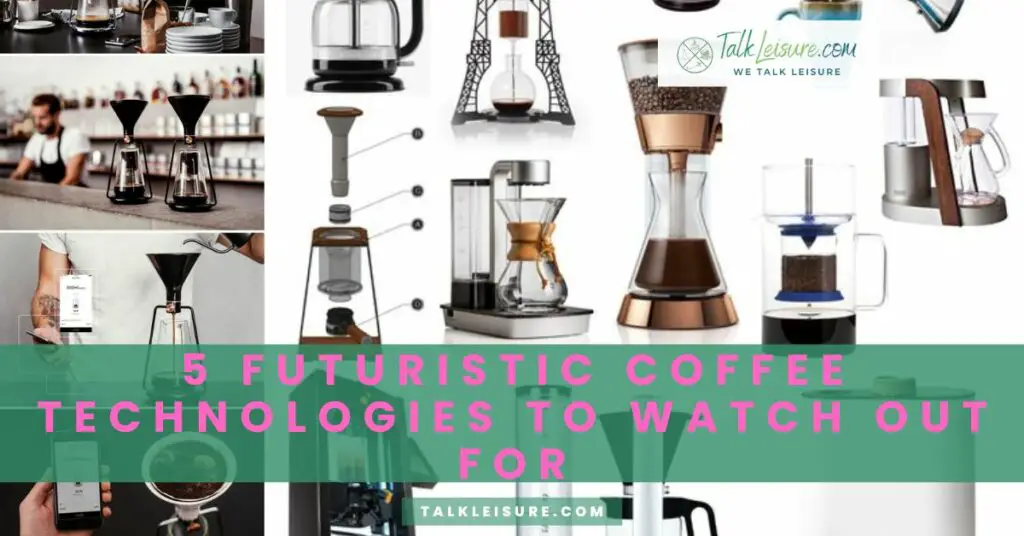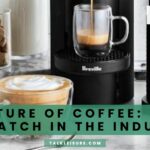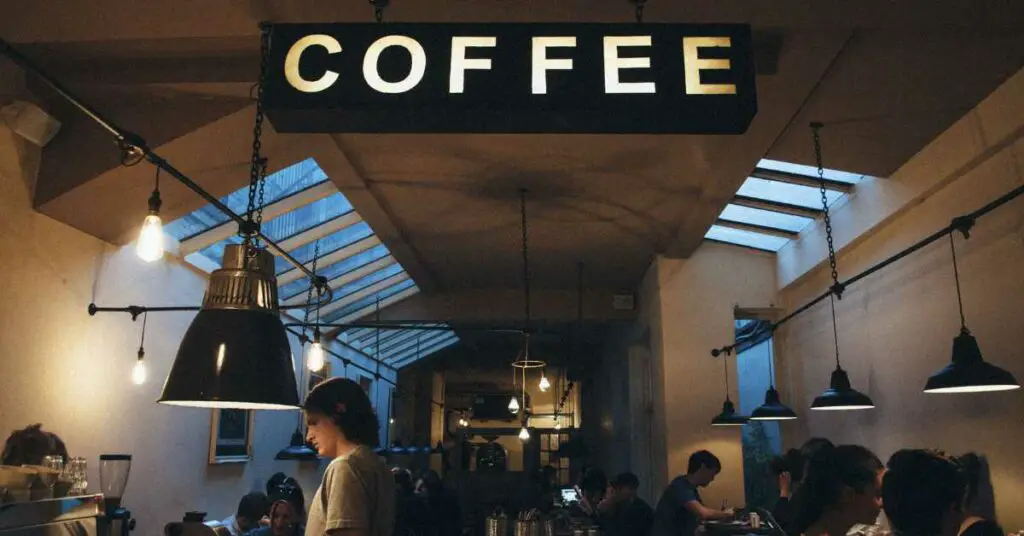In the ever-evolving world of coffee, innovative technologies are pushing the boundaries of what’s possible, promising a future where our coffee experiences are not only more convenient but also more delightful.
1. Smart Coffee Makers
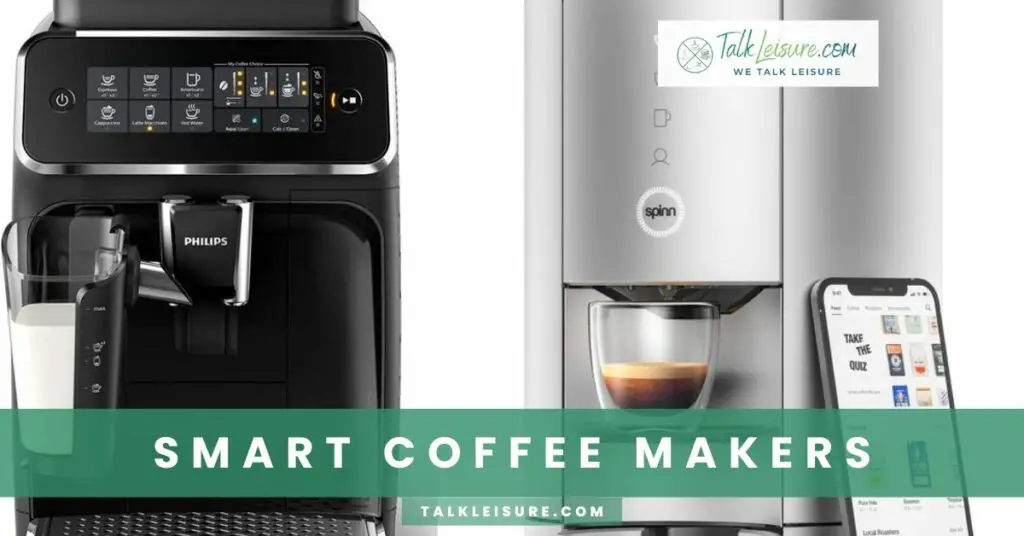
Smart coffee makers have indeed sparked a revolution in the world of brewing, blending traditional coffee preparation with cutting-edge technology.
These intelligent devices go beyond the basic function of brewing coffee; they incorporate features that enhance the user experience and provide greater control over the brewing process.
7 Coffee Trends That Are Taking Over
Here are some key aspects of the revolution brought about by smart coffee makers:
Remote Control and Connectivity: Smart coffee makers often come with Wi-Fi or Bluetooth connectivity, allowing users to control and monitor the brewing process remotely. This means you can start brewing your coffee from the comfort of your bed or even while you’re on your way home.
Customizable Brewing: One of the standout features of smart coffee makers is the ability to customize your brewing preferences. You can adjust parameters such as brewing time, water temperature, and coffee strength to match your personal taste. Some devices even have pre-programmed settings for different coffee varieties.
Integration with Smart Home Ecosystems: Many smart coffee makers can be integrated into larger smart home ecosystems. This means they can communicate with other smart devices and be part of automation routines. For example, you could set your coffee maker to start brewing when your morning alarm goes off or when you enter the kitchen.
Voice Activation: With the rise of virtual assistants like Amazon Alexa and Google Assistant, some smart coffee makers offer voice activation features. You can simply command your coffee maker to start brewing using voice commands, adding an extra layer of convenience to your morning routine.
Alerts and Notifications: Smart coffee makers can send notifications to your smartphone, keeping you informed about the brewing process. Whether it’s notifying you when your coffee is ready or when it’s time to descale the machine, these alerts contribute to a more user-friendly experience.
2. Augmented Reality in Coffee Shops
Augmented Reality (AR) in coffee shops is transforming the way customers experience their favorite beverage, extending the interaction beyond simply drinking coffee.
Here are some ways in which augmented reality is being integrated into coffee shop experiences:
Interactive Menus: Coffee shops can use AR to create interactive menus. By pointing a smartphone or a specialized AR device at the menu, customers can see detailed information about each coffee blend, its origin, and tasting notes. This immersive experience helps customers make more informed choices.
Brewing Process Visualization: AR can be used to visualize the entire coffee brewing process. Customers can point their devices at the coffee machine or equipment, and AR overlays can show the step-by-step process of how their coffee is being prepared, from bean grinding to the pouring of the final cup.
Virtual Coffee Tasting: AR allows customers to virtually “taste” different coffee blends. By using AR apps, customers can point their devices at coffee bags or images of different blends, and the app can simulate the flavor profile through visual and audio cues, enhancing the decision-making process.
Coffee Art and Storytelling: Baristas can use AR to bring coffee art to life. Customers can view the art on their coffee cups through their devices, and animations or additional information about the coffee’s story, origin, or the barista’s creative process can be displayed.
Coffee Education: AR can be employed for educational purposes. Coffee shops can provide AR experiences that teach customers about the coffee bean growing process, the journey from farm to cup, and the various brewing methods. This adds an educational layer to the coffee-drinking experience.
AR Loyalty Programs: Coffee shops can use AR to enhance loyalty programs. Customers can scan their loyalty cards or use AR apps to collect virtual stamps or points, unlocking special discounts or promotions. This gamification element adds a fun and engaging aspect to the customer loyalty experience.
3. Sustainable Farming Technologies
Sustainable farming technologies have become essential tools in the coffee industry to cultivate ethical and eco-friendly beans.
As consumers increasingly prioritize environmental and ethical considerations, coffee producers are adopting innovative technologies to promote sustainable practices.
Here are some key technologies contributing to the cultivation of ethical and eco-friendly coffee:
Agroforestry Systems: Agroforestry involves growing coffee alongside other crops or trees, creating a more biodiverse and resilient farming system. This approach enhances soil fertility, reduces the need for chemical inputs, and provides habitat for diverse plant and animal species.
Precision Agriculture: Precision agriculture utilizes technology such as GPS, sensors, and data analytics to optimize farming practices. By precisely managing inputs like water, fertilizers, and pesticides, farmers can minimize environmental impact and improve resource efficiency.
Water Management Technologies: Sustainable water management is crucial in coffee cultivation. Technologies like drip irrigation, rainwater harvesting, and soil moisture sensors help farmers conserve water, reduce water pollution, and ensure efficient irrigation practices.
Organic Farming Practices: Organic farming avoids synthetic pesticides and fertilizers, relying on natural and sustainable methods to enrich the soil and control pests. Technologies that support organic farming include composting, cover cropping, and biological pest control.
Blockchain for Supply Chain Transparency: Blockchain technology enables transparent and traceable supply chains. Coffee producers can use blockchain to provide consumers with detailed information about the origin of their coffee beans, ensuring fair labor practices and environmental stewardship.
Smart Farming and IoT: Internet of Things (IoT) devices, such as sensors and monitoring systems, help farmers collect real-time data on environmental conditions, soil health, and crop performance. This data enables informed decision-making and resource optimization.
Solar-Powered Processing Equipment: Sustainable energy solutions, such as solar-powered processing equipment, reduce the carbon footprint of coffee production. Solar energy can be used for drying coffee beans, powering machinery, and meeting other energy needs on the farm.
Biological Pest Control: Integrated Pest Management (IPM) employs natural predators and beneficial organisms to control pests, reducing the reliance on chemical pesticides. This approach helps maintain a balanced ecosystem and minimizes harm to non-target species.
4. Blockchain in the Coffee Supply Chain

Blockchain technology has emerged as a powerful tool in the coffee industry, particularly in the coffee supply chain.
By leveraging blockchain, the coffee supply chain can achieve greater transparency, traceability, and trust.
Here’s how blockchain is brewing transparency in the coffee supply chain:
End-to-End Traceability: Blockchain allows for the creation of an immutable and transparent ledger that records every transaction and movement of coffee beans from farm to cup. Each participant in the supply chain, including farmers, processors, distributors, and retailers, can input and access data, providing a complete and unalterable history of the coffee’s journey.
Provenance and Origin Verification: Consumers are increasingly interested in knowing the origin of their coffee and the conditions under which it was produced. Blockchain enables coffee producers to provide verifiable information about the origin of the beans, including details about the specific farm or region, cultivation practices, and harvesting methods.
Fair Trade and Ethical Sourcing: Blockchain technology can be used to track and verify adherence to fair trade and ethical sourcing standards. Smart contracts on the blockchain can automatically enforce agreements between parties, ensuring that farmers are paid fairly, and ethical practices are maintained throughout the supply chain.
Quality Control and Certification: Blockchain facilitates the integration of quality control data into the supply chain. Information regarding coffee quality assessments, certifications (such as organic or fair trade certifications), and compliance with industry standards can be securely recorded on the blockchain, providing a reliable source of information for consumers.
Reducing Fraud and Counterfeiting: The decentralized and tamper-resistant nature of blockchain helps prevent fraud and counterfeiting in the coffee supply chain. Once information is added to the blockchain, it cannot be altered retroactively, providing assurance that the details about the coffee’s origin and journey are accurate and reliable.
Streamlining Supply Chain Processes: Blockchain streamlines supply chain processes by reducing paperwork and manual record-keeping. Smart contracts can automate various stages of the supply chain, such as payment processing, quality assurance, and logistics, leading to increased efficiency and reduced errors.
5. 3D Printing in Coffee Artistry
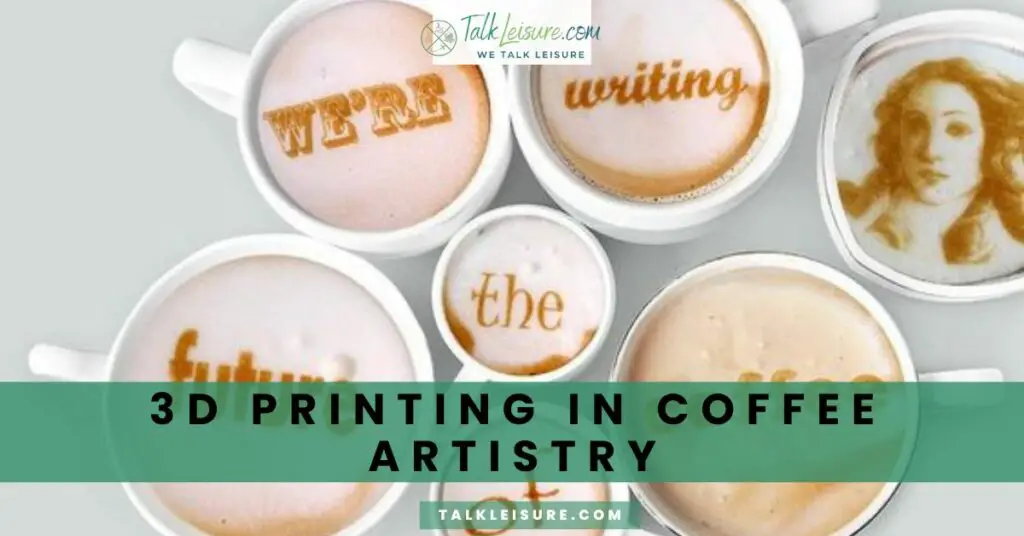
3D printing has found its way into various creative domains, and coffee artistry is no exception.
The integration of 3D printing in the realm of coffee art opens up new possibilities for crafting aesthetic pleasures.
Here are several ways in which 3D printing is influencing and enhancing coffee artistry:
Customized Coffee Stencils: 3D printing allows for the creation of intricate and personalized coffee stencils. Baristas and coffee enthusiasts can design and produce stencils with unique patterns, logos, or messages that can be used to sprinkle cocoa or spices on the foam of a cappuccino or latte.
Latte Art Tools: Baristas can use 3D-printed tools to assist in the creation of latte art. These tools can have precise shapes and patterns that help artists design intricate and consistent latte art on the surface of the coffee. The precision offered by 3D printing contributes to the repeatability of complex designs.
Coffee Bean Roasters: While not directly related to the visual aspect of coffee artistry, 3D printing can be employed to create custom coffee bean roasters. These roasters can be designed with specific features to enhance the roasting process and produce beans with unique flavors and aromas, contributing to the overall coffee experience.
3D-Printed Drinkware: Coffee mugs and cups with intricate 3D-printed designs can add a visually appealing element to the overall coffee presentation. These customized drinkware items can be tailored to match the theme of a coffee shop or to complement specific coffee blends.
Sculpted Coffee Toppings: 3D printing enables the creation of edible sculptures and decorative toppings for coffee. Baristas can design and print intricate shapes using edible materials like chocolate or sugar to adorn the top of beverages, adding an artistic and flavorful touch.
Temperature-Controlled Coffee Accessories: 3D printing can be used to create temperature-controlled accessories, such as coffee sleeves or cup holders. These accessories not only protect hands from hot beverages but can also be designed with artistic elements to enhance the overall visual appeal of the coffee drinking experience.
3D-Printed Coffee Art Exhibitions: The intersection of 3D printing and coffee art can extend to unique exhibitions and events. Artists and designers can showcase their 3D-printed coffee-related creations, from intricate latte stencils to innovative drinkware, creating a fusion of technology and artistry.
Conclusion
The infusion of 3D printing into coffee artistry has ushered in a new era of creativity and customization.
From personalized stencils and latte art tools to temperature-controlled accessories and edible sculptures, the marriage of technology and the art of coffee has opened up exciting possibilities.
Baristas and coffee enthusiasts alike can now explore uncharted realms of visual appeal and aesthetic pleasures, transforming the coffee-drinking experience into a delightful and personalized journey.
As 3D printing technology continues to evolve, we can anticipate even more innovative applications that will further elevate the artistry and craftsmanship associated with this beloved beverage.
Frequently Asked Questions
Can 3D printing be used to create functional coffee accessories?
Yes, 3D printing can be employed to design and produce functional coffee accessories, such as temperature-controlled cup holders or customized drinkware with unique shapes and textures.
What materials are commonly used for 3D printing in coffee artistry?
Depending on the application, materials like edible chocolate or sugar can be used for creating decorative toppings or sculptures. For non-edible items, common 3D printing materials include various plastics and, in some cases, metals.
How precise can 3D printing be in creating coffee stencils and latte art tools?
3D printing offers a high degree of precision, allowing for the creation of intricate and detailed designs in coffee stencils and latte art tools. This precision contributes to the repeatability of complex patterns and shapes.
Are there any safety concerns with 3D-printed items used in contact with food or beverages?
When creating items that come into contact with food or beverages, it’s crucial to use food-grade materials for 3D printing. Baristas and designers should ensure that the materials used comply with relevant safety standards.
Can 3D printing technology be applied to coffee bean roasting processes?
While 3D printing itself may not be directly involved in the roasting process, it can be utilized to create custom coffee bean roasters with specific features to enhance the roasting experience and produce beans with unique flavors.
Best Wishes!

